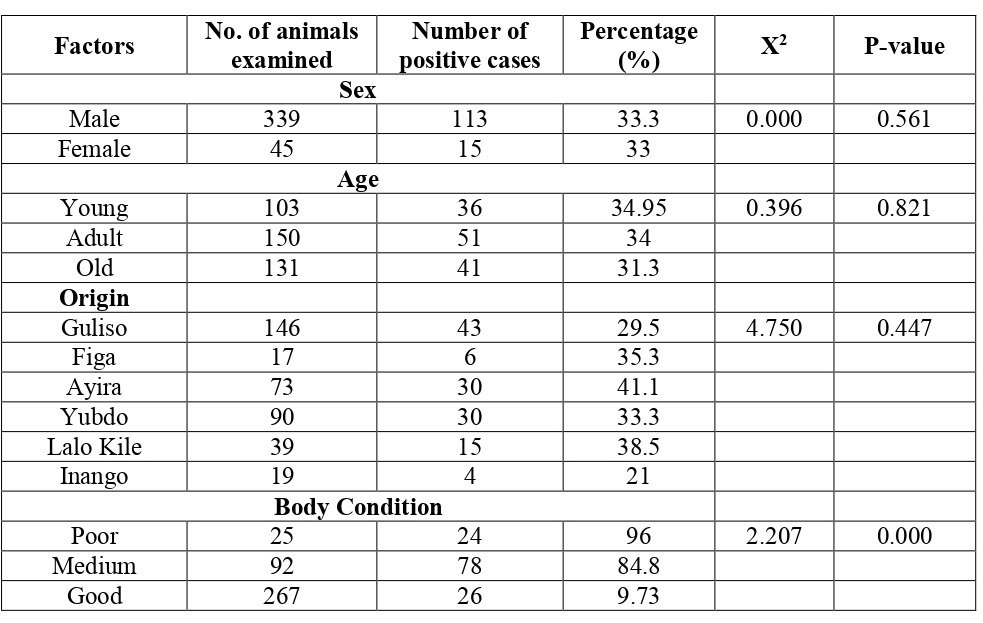Prevalence of Bovine Fasciolosis and its Financial Loss at Gulliso Slaughter House, West Wallaga Zone Western Ethiopia
Keywords:
Cattle, Fasciola, Guliso, Prevalence.Abstract
A cross-sectional study conducted in Guliso, from September 2021 to June 2022 sought to identify the kind and prevalence of common Fasciola species in cattle as well as the financial damage resulting from liver condemnation. The study's foundation was a post-mortem examination of the livers of animals that had been killed at the abattoir in the Guliso municipality and its environs. 384 study animals were chosen for post-mortem examination using random systematic sampling procedures in this investigation. In the study, 128 (33.3%) cows had bovine fasciolosis overall. 54 animals (14.1%) had Fasciola gigantica, 49 animals (12.3%) had Fasciola hepatica, and 25 animals (6.5%) had mixed infections. Within the various body condition ratings, there was a significant difference (P<0.05) in the prevalence of bovine fasciolosis. Animals with poor and medium body condition ratings had the highest prevalence (96%) and lowest prevalence (84.7%), respectively, whereas animals with good body condition scores had the lowest prevalence (9.73%). Regarding age, sex, and animal origin, there was no statistically significant difference (P>0.05) in the prevalence of bovine fasciolosis. The estimated yearly financial loss at the abattoir resulting from liver condemnation linked to liver flukes was 138,528 Ethiopian birr. Given the current findings, fasciolosis may be viewed as a serious issue in the area and its environs since the ecological parameters and management circumstances support the survival of both the parasite and its intermediate host, the snail. To prevent pasture contamination and lower the worm burden from affected animals, strategic treatments must be applied at the right time. To maximize the long-term returns from such endemic locations, integrated control techniques involving livestock owners must be developed to reduce the population and activity of snail intermediate hosts.
Downloads

Published
How to Cite
Issue
Section
Copyright (c) 2022 Authors

This work is licensed under a Creative Commons Attribution-NonCommercial 4.0 International License.




